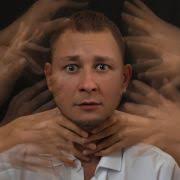Tachysensia is a fascinating neurological condition. It alters your perception of time. Specifically, things seem to move too fast. This experience is often called the “fast-feeling.” Moreover, it can be very disorienting. People describe a sudden rush of speed. Consequently, sounds may also seem louder. This phenomenon is quite rare. Therefore, many people do not know it. This article will explore tachysensia deeply.
The Core Experience of Tachysensia
Tachysensia creates a strange sensory experience. Your brain perceives time incorrectly. For instance, everything peeds up around you. High-pitched and quick sounded voices reaches.You are moving at a normal pace but your own movements feel rapid to you. . This creates a bizarre disconnect. You know something is not right. Yet, you cannot control the feeling. The episodes are usually brief. They last only a few minutes. Subsequently, perception returns to normal.
The experience is not a hallucination. You are seeing real events. But your brain processes them differently. This processing error causes the distortion. Tachysensia episodes are often overwhelming. They can cause anxiety or panic. Imagine the world on fast-forward. That is a common description. Also, some report a feeling of pressure. It feels like a buildup in the head. Then, the episode suddenly starts.
Tachysensia can begin in childhood. Many adults recall having these episodes. They often describe them with confusion. For example, they felt alone with it. They could not explain it to others. As a result, they kept it secret. The episodes might decrease with age. Or, they might continue into adulthood. The frequency varies from person to person.
Differentiating Tachysensia from Other Conditions
Tachysensia is unique. It is not like other time perception issues. For instance, it differs from time dilation. Time dilation can make time feel slow. This can happen during traumatic events. Conversely, tachysensia makes time feel fast. It is a very specific distortion.
It is also not a psychiatric disorder. It is a neurological phenomenon. However, it can co-occur with anxiety. The episodes themselves can trigger fear. This is an understandable reaction. The world suddenly feels out of control. Furthermore, it is not related to epilepsy. Although, some symptoms can seem similar. A proper diagnosis is important. A neurologist can help rule out other conditions.
Migraines are another consideration. Some people with migraines experience auras. These auras can involve perceptual distortions. However, tachysensia can occur independently. It does not always accompany a headache. A detailed medical history is crucial. This helps doctors understand the context. Therefore, they can make an accurate diagnosis.
Potential Triggers and Causes of Tachysensia
The exact cause of tachysensia is unknown. Research on this condition is limited. However, several theories exist. Some experts believe it relates to brain activity. Specifically, a part of the brain is involved. This part is the temporal lobe. The temporal lobe processes sensory input. It also plays a role in memory.
A temporary dysfunction could cause tachysensia. This might be due to various factors. For instance, fevers can be a trigger. Many children report episodes during illness. Stress is another potential trigger. High levels of stress affect the brain. Likewise, fatigue can play a role. When you are very tired, brain function changes.
Certain substances might also be involved. For example, some medications could trigger episodes. More research is needed in this area. There may also be a genetic link. The condition could run in families. Anecdotal reports suggest this possibility. But, scientific evidence is still lacking. The cause of tachysensia is being investigated by scientists.
The Role of Illness in Tachysensia
Illness, especially with fever, is a common theme. Many first experiences with tachysensia happen then. A high body temperature affects the brain. It can alter neurotransmitter levels. This could disrupt normal brain function. Thus, it leads to perceptual distortions.
This connection is not fully understood. However, the pattern is notable. Children seem particularly susceptible. Their brains are still developing. This might make them more vulnerable. The experience can be very frightening. A sick child feels even worse.

It is important to comfort the child. Reassure them that it will pass. Explain that the fever is affecting them. This can help reduce their anxiety. After the fever breaks, episodes often stop. This strengthens the link between illness and tachysensia. However, tachysensia can also happen without a fever.
Living with and Managing Tachysensia
Living with tachysensia can be challenging. The episodes are unpredictable. They can happen at any time. This can create a sense of unease. You might worry about when it will happen next. This is especially true in public. The sudden disorientation is difficult.
There is no specific cure for tachysensia. Management focuses on coping strategies. First, try to identify your triggers. Do episodes happen when you are stressed? Or when you are tired or sick? Keeping a journal can help. Note when episodes occur. Also, write down what was happening before. This can reveal patterns over time.
Once you know your triggers, you can act. For example, if stress is a trigger, find ways to relax. Meditation or deep breathing may help. If fatigue is a factor, prioritize sleep. A consistent sleep schedule is beneficial. Avoiding known triggers can reduce episode frequency. A life with tachysensia can be managed.
During an episode, try to stay calm. Remember that it is temporary. It will pass in a few minutes. Find a quiet place to sit down. Close your eyes and focus on your breathing. Some people find grounding techniques helpful. For instance, touch something familiar. Feel its texture. Focus on that sensation. This can help you feel more in control.
The Diagnostic Process for Tachysensia
Diagnosing tachysensia is not straightforward. There is no specific test for it. Doctors rely on patient descriptions. Therefore, a detailed account is very important. Explain the “fast-feeling” clearly. Describe how time and sound seem to change. Mention how long episodes last.
A doctor will first rule out other conditions. This is a crucial step. They may order an electroencephalogram (EEG). An EEG records brain wave activity. This can help rule out seizure disorders. They might also order an MRI scan. An MRI provides detailed images of the brain. This can check for structural abnormalities.
If these tests are normal, tachysensia is likely. The diagnosis is made based on symptoms. A neurologist is the best specialist to see. They have expertise in brain-related conditions. They can provide the most accurate assessment. It is important to be patient. The diagnostic process can take time.
Many doctors are not familiar with tachysensia. It is a very rare condition. You might need to educate your doctor. Bring articles or research with you. This can help them understand your experience. Online communities can also be a resource. Connecting with others is helpful.
The Future of Research on Tachysensia
Research on tachysensia is still in its infancy. The condition needs more attention. Scientists need to study it more. More funding is needed for this work. A better understanding could lead to treatments. It could also improve diagnostic methods.
Future research could explore brain imaging. Techniques like fMRI could be useful. An fMRI shows brain activity in real time. Scientists could scan someone during an episode. This would provide valuable data. It could show which brain areas are active. It could confirm the role of the temporal lobe.
Genetic studies are also a possibility. Researchers could look for a genetic marker. This would involve studying families with tachysensia. Identifying a gene would be a major breakthrough. It would confirm a biological basis for it.
Case studies are also important. Detailed reports of individual experiences help. They build a body of knowledge. Doctors can learn from these reports. This helps them recognize the condition. Ultimately, more awareness is the first step. The internet has helped with this. People are finding a name for their experience. This validation is incredibly powerful.
Conclusion: Understanding the Phenomenon of Tachysensia
In conclusion, tachysensia is a rare condition. It causes a distorted sense of time. Episodes are brief but intense. They can be very disorienting and frightening. The world seems to speed up. Sounds can become louder and faster. The exact cause remains unknown. But, triggers like fever and stress exist.
Managing tachysensia involves coping strategies. Identifying triggers is a key step. Relaxation techniques can also help. There is no cure for this condition. A diagnosis is made by excluding other issues. This process can be long. More research is desperately needed. It will increase our understanding.
Despite the challenges, people can manage it. Knowing you are not alone is helpful. Online forums offer support. They connect people with similar experiences. Tachysensia is a real neurological event. It is not just in your head. As awareness grows, so will support. The future holds hope for more answers.
READ MORE; Siprnet….






